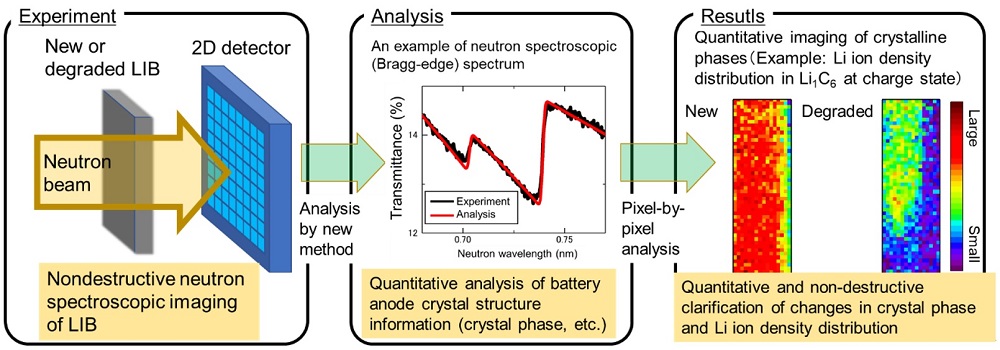
Summary
In collaboration with NISSAN ARC Ltd., the High Energy Accelerator Research Organization (KEK), and the Comprehensive Research Organization for Science and Society (CROSS), researchers in AIST successfully conducted nondestructive visualization of battery electrode degradation and quantification of the crystal phase types and densities. This was achieved by applying a newly developed analysis method to crystal structure imaging (Bragg-edge imaging) measurement by transmission spectrum analysis of neutron beams on new and degraded LIBs.
Neutron beams have high penetrating power and can penetrate the LIB housing to enable nondestructive observation of the interior. Furthermore, information on the crystal structure of the graphite or other anode material can also be obtained by analyzing the transmission spectrum of the neutron beam. This research group devised and applied a new analysis method that takes into account the crystal orientation of graphite to visualize the insertion/extraction state, density, and two-dimensional spatial distribution of lithium ions in graphite anodes, and to quantitatively clarify the difference between new and degraded LIB products. Utilization of this technology for nondestructive and operand observation of the LIB degradation process due to charging and discharging can be expected to contribute to the development of even higher performance batteries.
Points
- Use of a neutron beam with high penetrating power to nondestructively observe the progression of heterogenous degradation inside commercially available batteries
- A new analysis method that takes into account crystal orientation reveals the heterogenous density distribution of each type of lithium-containing crystal in the anode material at a charged state
- Contribution to higher performance of lithium-ion secondary batteries, such as enhancement of charge-discharge cycle characteristics
Please refer to the press release for details.
